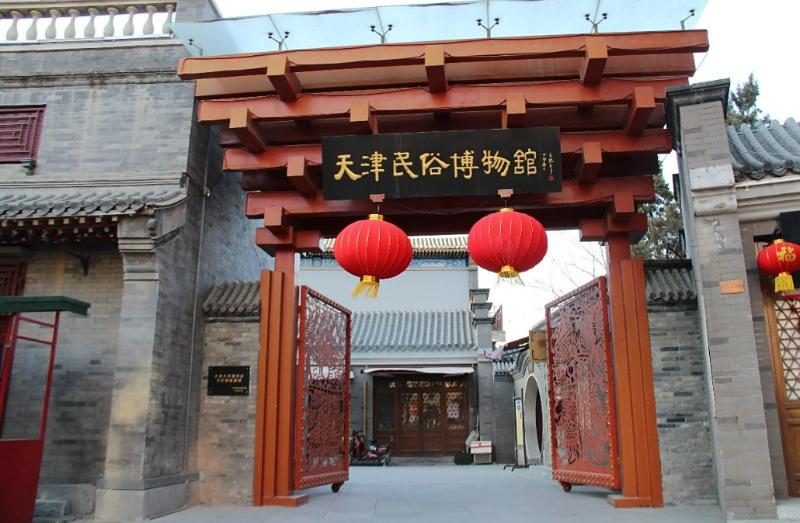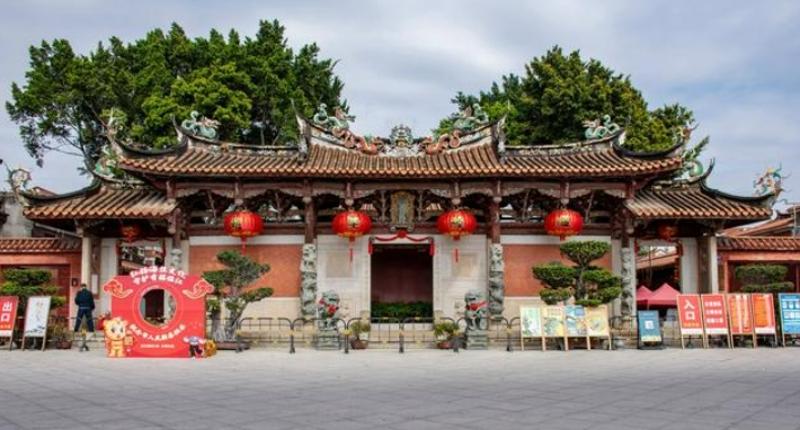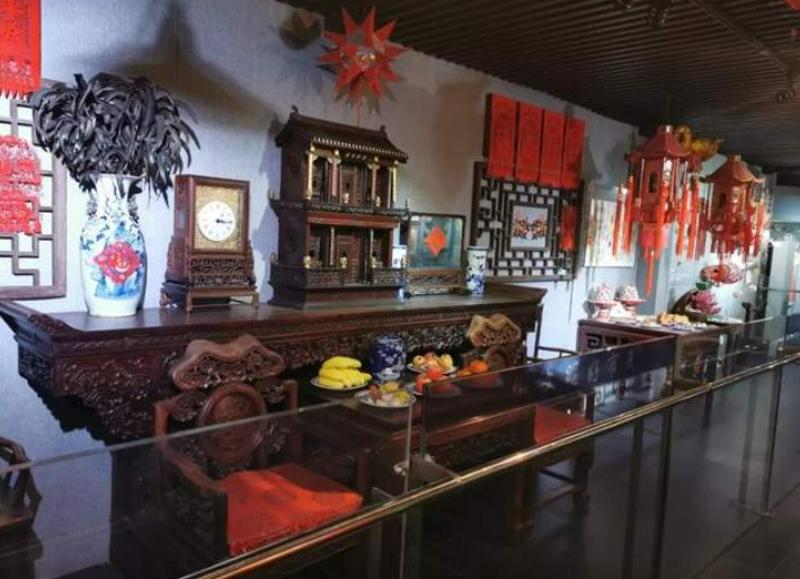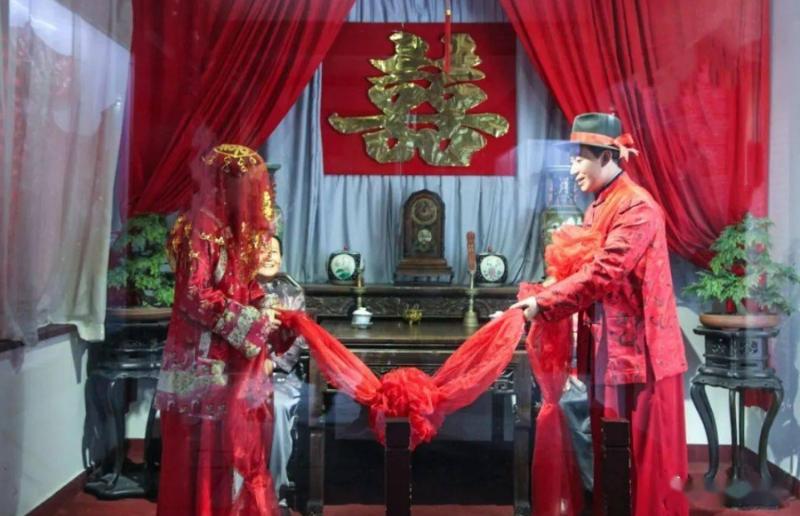Tianjin Ancient Culture Street Folk Custom Museum
The Tianjin Folk Custom Museum is a local folklore museum in China, located in the center of Tianjin Ancient Culture Street. It was established in 1985 and opened to the public on New Year's Day in 1986. As an important window showcasing Tianjin's folk culture, the museum preserves and exhibits a large number of folk artifacts, making it an essential place for visitors to learn about Tianjin's history and cultural customs.

Reference:Overview of Tianjin Ancient Culture Street
Architectural Layout
The Tianjin Folk Custom Museum is housed in the main hall of the Tianhou Palace and its associated ancient architectural complex. This architectural complex includes the Shanmen (Mountain Gate), Paifang (Archway), Bell Tower, Drum Tower, Front Hall, Main Hall, Sutra Depository Pavilion, and Rear Hall Qisheng Shrine. There are four auxiliary halls on either side of the main hall. The Zhangxian Pavilion, located north of the Shanmen, is a unique overpass building on Ancient Culture Street, adding to the historical ambiance.
Exhibition Content
1. Statues in the Main Hall and Front Hall of Tianhou Palace
The museum retains the statues in the main hall and front hall of the Tianhou Palace as restored exhibits, allowing visitors to immerse themselves in the historical sacrificial culture.

2. Tianjin Folk Artifacts
The museum has collected around 2,000 folk artifacts, showcasing the rise of Tianjin's canal transportation, the development of fishing and salt industries, and related customs. These artifacts help visitors understand the historical changes and folk customs of Tianjin.

3. Folk Flower Fair Performances
The museum fully displays Tianjin's flower fair culture, especially the "Imperial Fair" street performances, highlighting the rich and colorful folk performing arts of Tianjin.
4. Traditional Marriage Customs
The museum provides detailed introductions to traditional marriage customs such as wedding processions, couple worship ceremonies, wedding chamber traditions, and Tianjin's unique "child binding" custom. These exhibits help visitors understand the evolution of Tianjin's marriage culture and customs.
5. Shop Signboards
The various shop signboards hanging in front of Tianjin shops are also a highlight of the museum. Through these signboards, visitors can learn about Tianjin's traditional commercial culture and shop operation characteristics.
6. Folk Handicrafts
The museum displays folk handicrafts such as Yangliuqing New Year pictures, kites, brick carvings, clay sculptures, velvet flowers, paper cuttings, and weaving, reflecting Tianjin's rich folk art traditions.

Special Activities
1. Calligraphy and Painting Exhibitions
The museum frequently hosts exhibitions of calligraphy, clothing, porcelain carving, root carving, industry paintings, and folk crafts, attracting many calligraphy and painting enthusiasts and tourists.
2. Drama Performances
On major holidays, the museum hosts traditional drama performances and folk flower fair performances in the ancient theater and square, selling various folk art items and enriching the visitor experience.
Important Exhibits
1. The "Mazu" Purple Clay Teapot
The "Mazu" Purple Clay Teapot is one of the important exhibits in the Tianjin Folk Custom Museum. Created by Yixing ceramic artists Xian Zhongying and Lu Qiaoying, this teapot, themed on the image of Mazu, has high artistic value.
Historical Development
The Tianhou Palace was initially a place for boatmen to worship the sea goddess Tianfei. As Tianjin developed, it gradually became a commercial market and a New Year goods market. Today, the Tianhou Palace houses the Tianjin Folk Custom Museum, displaying Tianjin's historical evolution and folk customs, making it a significant symbol of Tianjin's folk culture.
Conclusion
The Tianjin Folk Custom Museum, with its rich exhibits and exciting activities, allows visitors to gain an in-depth understanding of Tianjin's history and folk customs. The charm of its ancient architecture and the diverse exhibition content are truly captivating.
